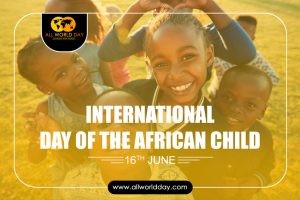 The International Day of the African Child is a significant event that honors the courage, resilience, and potential of African children. Celebrated annually on June 16th, this day raises awareness about the rights, needs, and challenges faced by children across the African continent. In this blog, we will explore the history of this day, its theme for 2023, the importance of celebration, ways to observe the occasion, and inspiring quotes that capture the spirit of the African child.
The International Day of the African Child is a significant event that honors the courage, resilience, and potential of African children. Celebrated annually on June 16th, this day raises awareness about the rights, needs, and challenges faced by children across the African continent. In this blog, we will explore the history of this day, its theme for 2023, the importance of celebration, ways to observe the occasion, and inspiring quotes that capture the spirit of the African child.
History of International Day of the African Child:
The International Day of the African Child commemorates the Soweto Uprising that took place on June 16, 1976, in Soweto, South Africa. Thousands of black students marched in protest against the inferior quality of education they were receiving under the apartheid regime. Tragically, hundreds of children lost their lives during the protest. The day symbolizes the brave fight for equal education and serves as a reminder of the ongoing struggle for the rights of African children.
Theme for International Day of the African Child 2023:
The theme for the International Day of the African Child 2023 is “Education for Empowerment: Unlocking the Future.” This theme emphasizes the transformative power of education in shaping the lives of African children. It highlights the need for accessible, quality education that equips children with the knowledge, skills, and opportunities necessary to build a brighter future for themselves and their communities.
Why Do We Celebrate International Day of the African Child?
The celebration of the International Day of the African Child serves several important purposes. Firstly, it raises awareness about the challenges faced by African children, including poverty, lack of education, child labor, and child marriage. It also encourages governments, organizations, and individuals to take action to protect and promote the rights of children across the continent. Moreover, the day provides an opportunity to celebrate the resilience, talents, and potential of African children, who are the future leaders and change-makers of Africa.



